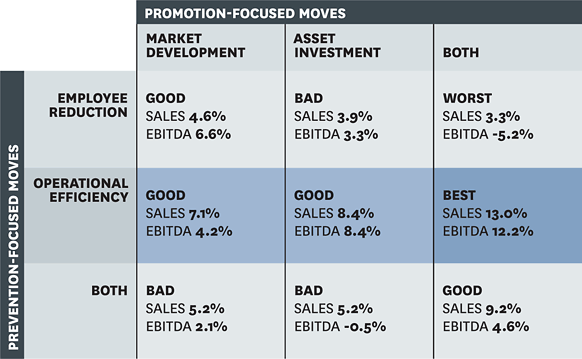Marketers must make wise choices in adverse times, but doing so involves careful analysis of past data and the use of tactics that have proven successful over time. Let’s delve into some options that marketers have at their disposal to go through the looming recession and come out stronger.
The 95:5 rule of B2B marketing, as articulated by Professor John Dawes of the Ehrenberg-Bass Institute, states that 95% of customers are out-of-market and only 5% are in-market, and marketing’s main job is to increase sales from the 95% of customers who might buy in the future.
However, in recessions, the 5% of current buyers shrinks to 1%, and the 95% of future ones swells to 99%. And while demand shifts to a future delay, B2B marketers keep allocating most of their budgets to chasing after those 5%.
That is because, in general, B2B marketers overinvest in short-term sales activation and underinvest in brand building, which primes future buyers long before they enter the market. This is an issue we previously touched upon in this article. During a recession, brand advertising budgets are usually the first line item that gets cut and the savings are often re-allocated to lead generation activities.
Brand advertising is not about profiting in a recession; it is about capitalising on the recovery. When buyers re-enter the market, the most memorable B2B brands will end up capturing the majority of sales.
But this doesn’t make much sense, as the pool of leads has contracted and companies are competing to serve “act now” messages to buyers. Instead of doubling down on lead generation, marketers should focus on memory generation and invest in effective branding that increases future demand from future buyers.
To set their companies up for post-recession success, B2B brands can do two simple things: recycle old creatives and cut subprime media. Recycling an old branding-focused ad that customers remember and recognise, instead of investing in new ads, can prove very effective. And premium media channels become cheaper in recessions as advertisers go dark.
So, investing in brand marketing is the best bet in good times, and it’s an even better bet in bad times when there’s steeper competition for a dwindling number of in-market buyers.
But you would want to keep a healthy balance. A 2010 Harvard Business Review article explained how to achieve it and fit it into a recession-proof strategy. It explained how companies that use a certain set of cost-reduction and investment tactics have the best chance of beating their competition.
Those businesses are the ones that focus their offense on developing new markets and expanding their asset portfolios and their defense on increasing operational efficiency without employee reduction. (Consider this in the context of the recent mass layoffs in the tech industry.)
Peter Field offers seven guidelines for adapting a business during a time of recession:
- Resist the pressure to switch advertising spend from branding solely to activation.
- Instead, aim to maintain your share of voice (SOV), ideally at least at the level of your market share.
- If resources can be found, consider the opportunity to invest in cheaper long-term growth by increasing the share of voice.
- Do not cancel your existing brand campaign unless it clearly does not play well with the current moods of customers. Continuity might be better than change.
- Use emotional brand advertising that demonstrates humanity through warmth, generosity and humor.
- Look for opportunities to create goodwill through acts of humanity and generosity, especially if you were advocating such values before the crisis.












